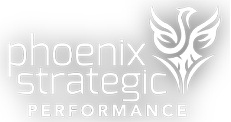If you can’t define it – you haven’t ‘tangibilized’ it.
What does 'tangibilizing' mean? Tangibilizing’© is the process of taking ambiguous language and precisely defining the terms through the questioning process. You can then completely describe the client's situation in concrete, defined, specific terms.
The Basics of the Relationship Sales Process
In the relationship sales process, clients want you to be a confidante and resource who understands and is working to help solve their business challenges. They are looking for someone to advise and partner with them, moving up the trust ladder together. They don’t want to feel like they are ‘being sold’! (Clients can definitely tell if you're there just for a quick sale.) If you want to succeed at relationship selling, everything about your approach must reflect this proposition.
Challenge #1 - The Complexity of Ambiguity
Relationship selling is a complex process due to all the potential ambiguity and assumptions involved. This ambiguity stems from a salesperson’s assumptions and a lack of clarity, understanding, and direction from the client. So what do salespeople tend to want to do? Very quickly simplify the complexity into a paradigm the salesperson can process – the shift from a client to a sales focus. What’s the problem with this approach? In speeding up the process, salespeople can oversimplify the intricate nuances unique to the client, understanding only the most shallow level of client information. In effect, salespeople have made the client generic and simply a commodity defined in the salesperson’s image. This results in ‘genericizing’ the client base. A client once said, “If you treat me like a commodity, I will pay you like a commodity.” Those are very powerful words every salesperson should continually consider. Relationship selling requires salespeople to gather information at the deepest and broadest levels. This information gathering is not a superficial or quick process.
This information gathering focuses entirely on:
- The client, their business, and their business challenges
- How does the client see their business today?
- How does the client see their business in the future?
In the client’s words, the salesperson and client achieve mindshare by understanding this information at the most detailed level. The salesperson can fully understand how to bring value, solve problems, and help clients meet and anticipate business challenges.
Challenge #2 - Client Information from the Client’s Perspective - The Art of 'Tangibilizing'
At this stage, we are not talking about selling, pitching, or presenting your product. This part of the relationship sales cycle is all about the client. It’s all about how well you ask questions about their business and how well you listen to and process the information. Information at this point is everything.
However, the information they give you can typically be very ambiguous. The client knows and understands their business but is not necessarily skilled in explaining the relevant information in a linear or clear way. (Appreciate, it is very linear and clear to them – since this is their operating world.) So this makes understanding the details of different businesses a challenge. As a sales professional, you may hear a lot of confusing and conflicting statements, company code, jargon, and straightforward questions. The challenge for the sales professional in relationship selling is to use every skill to clarify this ambiguous information into the most tangible information possible. We call this the process of ‘tangibilizing’©, when you can completely describe the client situation in concrete, defined, specific terms. This level of detail should ultimately be recorded in both a CRM system and in a Client Business Plan.
This is ‘Mission Critical.’ Any wrong or assumed information at this level will create ‘follows errors’ during the following stages. Misunderstanding the client’s problems, issues and operating ‘hooks’, will make it difficult to position your product with competitive impact. There is no room to tolerate ambiguity, code, or assumptions when selling relationships. The goal is to establish complete, tangible and specific knowledge of the client – to achieve ‘mindshare’. This is the role of sales, not the responsibility of the client.
Does your sales team have a defined sales strategy and sales methodology? I invite you to learn more about our Sales & Business Development program as part of the Phoenix Strategic Performance Institute. This program helps you to strategically align your sales process to accelerate the relationship sales process, creating corporate growth and building strategic value.
© Phoenix Group International and Phoenix Strategic Performance





